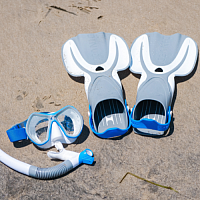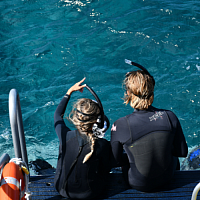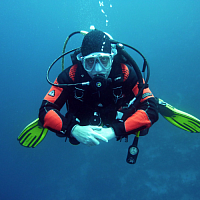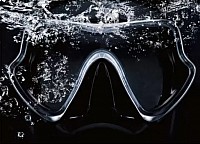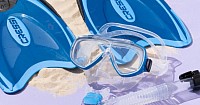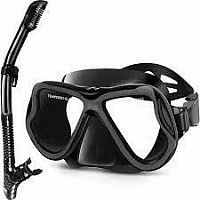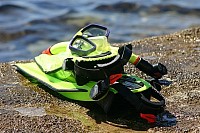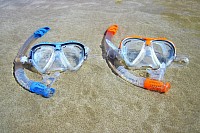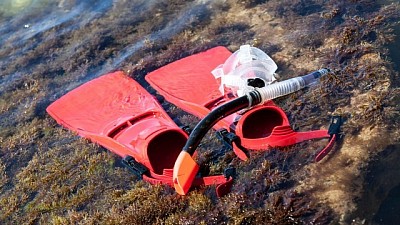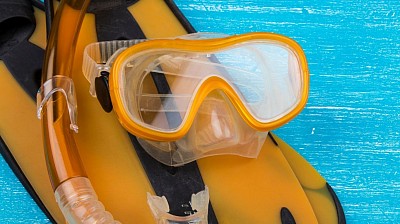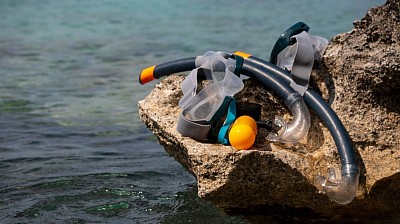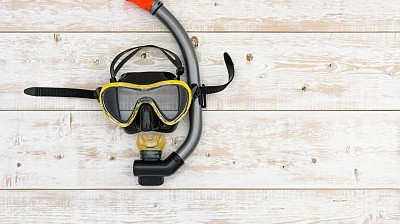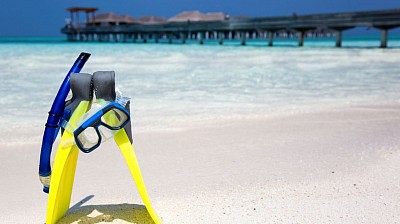Diving Gear Business Network
Embracing the Underwater World: The Evolution of Diving Gear
The allure of exploring the vast blue depths of our oceans has captivated humanity for centuries. With modern advancements, diving gear has evolved dramatically, allowing us to venture further and with more safety into this mesmerizing underwater world. From early breath-holding dives to the sophisticated equipment we use today, each innovation in diving gear has expanded our horizons and deepened our understanding of marine life.
1. The Early Days of Diving:
Historically, diving was a breath-holding endeavor, with divers relying on their lung capacity to harvest resources from the sea floor. It was not until the invention of air pumps and hoses in the 18th century that divers could stay submerged for longer periods.
2. Introduction of Scuba Gear:
The development of self-contained underwater breathing apparatus (SCUBA) revolutionized diving by providing a portable air supply. This advancement granted divers unprecedented freedom to explore without being tethered to surface-supplied air.
3. Advancements in Mask Technology:
Visibility is key in diving, and mask technology has made great strides over the years. Modern masks offer a wider field of vision and comfort, with features like tempered glass for durability and clear sightlines.
4. Fins for Enhanced Mobility:
Fins are an essential component that propels divers through water with minimal effort. Today's fins come in various designs catering to different diving styles and conditions, contributing significantly to diver agility and efficiency.
5. Dive Computers for Safety:
Dive computers have become indispensable tools that monitor depth, time underwater, ascent rate, and decompression status—vital information that helps divers avoid potentially life-threatening conditions like decompression sickness.
Amidst these innovations lies a segment tailored towards young enthusiasts eager to explore aquatic environments—the youth snorkel sets market demonstrates how inclusivity plays a role in fostering a love for marine exploration among younger generations.
The Importance of Quality Snorkeling Gear for Underwater Exploration
Snorkeling is an accessible and fascinating way to explore the underwater world. Whether you're gliding over vibrant coral reefs or gazing at schools of colorful fish, having the right snorkeling gear is essential for a safe and enjoyable experience. Here are five crucial considerations when selecting snorkeling equipment that can enhance your underwater adventure.
1. Comfortable and Functional Masks
A well-fitting mask is vital for clear underwater vision. Look for masks with a soft, silicone skirt that conforms to the contours of your face to prevent water from seeping in. For individuals who require visual correction, prescription masks are available that can be customized to match your eyesight needs, ensuring you won't miss any of the awe-inspiring details of the marine life around you.
2. Reliable Snorkels
The snorkel is your lifeline to breathing effortlessly while observing undersea wonders. A quality snorkel has a comfortable mouthpiece and a design aimed at reducing water entry, such as a splash guard or dry valve system on top. Some models also include purge valves at the bottom for easy clearing of water, allowing you to focus on your surroundings rather than managing your equipment.
3. Efficient Fins
Fins are an extension of your body when moving through water; they should be both powerful and comfortable. Adjustable straps or full-foot pocket designs cater to different preferences and use cases—shorter fins are suitable for travel and calm waters, while longer fins offer more propulsion in deeper or stronger currents.
4. Durable Accessories
Additional accessories can make a significant difference in your snorkeling experience. Anti-fog treatments for masks ensure continuous clarity of view, while wetsuits provide thermal protection and buoyancy control depending on the water temperature you'll encounter. Mesh bags help keep all equipment together and allow for easy rinsing and drying post-snorkel.
5. Eco-Conscious Choices
As advocates for ocean exploration, it's also important to consider environmentally friendly options when choosing snorkeling gear. Biodegradable anti-fog solutions, reef-safe sunscreens that don't harm marine life, and products made from recycled materials contribute to preserving the ecosystems we so enjoy exploring.
When selecting snorkeling gear, it's not just about functionality but also personal fit and preference—what works best for one person may not be ideal for another. Visit specialized stores like Get Wet Store where you can find a wide variety of snorkeling products catered to different requirements—from casual beachgoers seeking their first set of fins to seasoned divers looking for high-quality prescription dive masks.
With advancements in diving technology continuously improving gear performance and comfort, there's never been a better time to invest in reliable snorkeling equipment that suits your specific needs. By doing so, you'll ensure many memorable moments beneath the waves, capturing glimpses into an aquatic world teeming with life—a reminder of why preserving these natural treasures is so crucial.
Choosing the Right Youth Snorkel Sets for Underwater Adventures
The thrill of snorkeling is not just reserved for adults; young explorers are increasingly taking to the waters, eager to witness the undersea world up close. To ensure these adventures are both safe and enjoyable, selecting the right youth snorkel sets is crucial. Here's a guide to help navigate through the choices available, ensuring that young swimmers have an unforgettable underwater experience.
1. Comfort and Fit
The comfort of a snorkel set is non-negotiable, especially when it comes to children. Masks should fit snugly without being too tight, creating a seal that keeps water out without causing discomfort. The skirt of the mask – typically made of silicone – should be soft and flexible. An adjustable strap helps customize the fit to accommodate growth spurts or different hairstyles.
2. Safety Features
Safety is paramount when choosing gear for younger snorkelers. A mask with shatter-resistant glass offers durability and peace of mind during use. For snorkels, look for features like a dry top that prevents water from entering when submerged and a purge valve that allows easy clearing of water from the tube. These features significantly reduce choking risks and build confidence in beginner swimmers.
3. Field of Vision
Youth snorkel sets should provide a wide field of vision allowing kids to fully enjoy their surroundings without having to turn their head much, which can be tiring for their necks. A single-lens mask can offer unobstructed views while side windows enhance peripheral vision.
4. Mouthpiece Design
A mouthpiece should be sized appropriately for smaller mouths; large or improperly shaped mouthpieces can cause jaw fatigue and discourage kids from prolonged use of their gear. Look for small, ergonomic designs made from soft materials that are gentle on gums and teeth.
5. Buoyancy Aids
For those who are less confident in their swimming abilities or new to snorkeling, buoyancy aids can add an extra layer of safety and comfort in the water. Integrating a flotation device into the snorkeling expedition ensures that kids can focus on exploring without worrying about staying afloat.
6. Prescription Options
If your child requires corrective lenses, don't let this deter you from introducing them to snorkeling! Some stores offer prescription masks tailored specifically for children who need them – opening up clear views of marine life they might otherwise miss.
7. Durability
Kids will be kids, which means gear needs to withstand rough handling occasionally encountered during play or transport to different locations on family trips or outings with friends.
8.Ease of Use
Complicated equipment can quickly dampen enthusiasm; therefore simplicity is key! Youngsters should be able to put on and adjust their own gear with minimal assistance once they've been taught how.
9.Environmental Consideration
Teach children about respecting marine life by choosing eco-friendly products where possible - this could include packaging made from recycled materials or avoiding sunscreens harmful to coral reefs during their aquatic adventures.
Selecting Quality Snorkeling Equipment for Ocean Adventures
The allure of exploring the underwater world is one that resonates with many adventurers, and snorkeling provides an accessible way to experience the vibrant marine life and serene landscapes below the surface. However, the enjoyment and safety of your snorkeling adventures largely depend on choosing the right snorkeling equipment. Here are five considerations to keep in mind while selecting gear that will enhance your underwater explorations.
1. Comfortable and Secure Fit
When it comes to snorkeling masks, fins, and wetsuits, achieving a comfortable fit is crucial. Your mask should seal properly around your face without being too tight; it's what keeps water out and allows you to see clearly underwater. Similarly, fins should fit snugly without causing discomfort to your feet as they're essential for navigating through the water with ease. A well-fitting wetsuit not only helps with buoyancy but also protects against cooler temperatures and sun exposure.
2. Clarity of Vision
Underwater visibility is paramount during snorkeling excursions. High-quality goggles or masks with anti-fog treatments ensure uninterrupted views of coral reefs, fish, and other sea life. For those who require vision correction, prescription masks are available that cater to individual needs—allowing everyone to marvel at the underwater splendor without compromise.
3. Durability of Materials
Snorkeling equipment must withstand saltwater corrosion, sun exposure, and general wear-and-tear from ocean elements. Investing in gear made from durable materials extends its lifespan and ensures reliability throughout numerous outings. Silicone skirts on masks provide both durability and comfort; similarly, fins made from a blend of plastic and rubber offer longevity while supplying necessary flexibility.
4. Safety Features
While snorkeling is generally considered a safe activity, having equipment with built-in safety features adds an extra layer of protection. Brightly colored gear can increase visibility in the water—a useful attribute if you need to be spotted by others in your group or by boats nearby.
Snorkels designed with splash guards prevent water entry from waves or surface chop, allowing for easier breathing even when waters get rough.
5. Environmental Considerations
As stewards of the oceanic environment we enjoy so much during snorkeling activities, selecting eco-friendly equipment is another important factor to consider. Many brands now offer products made from sustainable materials; these options help reduce our ecological footprint while still providing high-performance gear for enthusiasts.
Additionally, responsible practices such as proper cleaning and storage can further minimize environmental impact by extending the life of your equipment.
In summary, selecting quality snorkeling equipment involves considering comfort, clarity of vision provided by goggles or masks (especially for those needing prescription solutions), durability against harsh oceanic conditions, safety enhancements for peace-of-mind during dives, as well as environmentally conscious choices reflecting our responsibility towards marine habitats.
Whether you're gearing up for a casual day at the beach or planning an extensive diving trip offshore—ensuring that you have reliable snorkeling gear will undoubtedly enrich your experience beneath the waves.
Remember these key points when outfitting yourself for your next aquatic adventure!
Navigating the Waters with Quality Snorkeling Gear
Embarking on a snorkeling adventure is an exhilarating way to explore the underwater world. Whether you're taking in vibrant coral reefs or witnessing schools of colorful fish, having the right snorkeling gear is essential for both safety and enjoyment. In this article, we dive into five key elements that should be considered when selecting the appropriate equipment for your aquatic excursions.
1. Choosing the Right Mask
A mask is your window to the underwater spectacle, so it's crucial to find one that offers clarity, comfort, and a watertight seal. Look for masks with adjustable straps that allow for a snug fit without causing discomfort. For those who require vision correction, prescription masks are available to ensure you don't miss any detail of the marine life around you. Silicone skirts typically provide a better seal than rubber and can contribute to longer, more comfortable snorkeling sessions.
2. Snorkels: The Breath of Fresh Air
Snorkels come in various designs but all serve the same purpose—to help you breathe while floating face-down on the water's surface. Basic models are straightforward tubes, but more advanced versions include features like dry tops that prevent water entry and purge valves that make clearing water easier. Always try out different styles to see which feels most natural for breathing comfortably as you navigate through the waters.
3. Fins: Propelling Through Currents
Fins add efficiency to your swimming, allowing you to save energy while covering more ground—or rather, water. When choosing fins, consider their size and stiffness; shorter fins are generally easier for beginners and offer more maneuverability in tight spaces while longer fins provide greater propulsion. It’s also important to select a pair that fits well—too tight could cause cramps and too loose might slip off.
4. The Role of Wetsuits
While not always necessary in warmer climates, wetsuits can provide thermal protection allowing you to stay in cooler waters longer without risking hypothermia. They also offer added buoyancy which can be helpful for beginner snorkelers still getting accustomed to floating effortlessly on the surface.
5. Accessory Considerations
Aside from these primary components of snorkeling gear, there are additional accessories that can enhance your experience:
- Anti-fog solutions help maintain clear visibility throughout your excursion.
- Mesh bags make transporting wet gear convenient and allow it to dry out more quickly.
- A waterproof camera or camera housing allows you to capture moments from your underwater journey without damaging sensitive electronics.
- A flotation belt or vest can offer an extra sense of security for those less confident in their swimming abilities or when venturing into deeper areas.
Each piece of snorkeling gear plays an essential role in shaping your experience beneath the waves. It’s about finding a balance between functionality, comfort, and personal preference—all while ensuring safety during every dip into oceanic realms.
When preparing for an underwater adventure at locations across the USA or even globally from coastal paradises like Hawaii’s coral gardens or Florida’s crystal springs—having reliable gear becomes part of creating memorable experiences below sea level.
For those looking forward to discovering what lies beneath waves without worrying about quality equipment issues—considering items such as prescription masks designed specifically for those needing visual aid under water—is just another way dedicated shops maximize customer satisfaction by catering directly towards individual needs within this industry.
In essence, selecting proper snorkeling gear isn’t just about utility; it's also about ensuring each moment spent submerged is as magical as possible—where nothing stands between you and nature except clear lenses capturing every color and movement offered by our planet's vibrant aquatic life!
The Evolution and Importance of Quality Diving Gear
The world beneath the waves is an extraordinary place, ripe for exploration. Diving gear is thus not just equipment; it is your ticket to enter another realm, a facilitator of underwater adventure. This post delves into the history and significance of diving gear, focusing on how advancements have enhanced the safety and enjoyment of activities such as snorkeling and scuba diving.
1. Historical Developments in Diving Gear:
Diving has captivated humans for centuries, with early efforts relying on hollow reeds or animal skins as primitive breathing apparatuses. It wasn't until the 20th century that we saw significant developments in diving technology. The invention of the Aqua-Lung by Jacques Cousteau and Emile Gagnan revolutionized scuba diving by allowing longer dives with more freedom. Over time, advances in materials and design have led to lighter, more durable gear that supports a range of underwater activities.
2. Modern Snorkeling Equipment:
Snorkeling is one of the most accessible ways to explore marine life. Modern snorkeling equipment—comprising masks, snorkels, and fins—is designed with comfort, functionality, and safety in mind. A well-fitting mask provides clear vision without fogging up or leaking water. Dry-top snorkels prevent water entry when submerged, while ergonomic fins offer efficient propulsion through the water.
3. Scuba Diving Gear Components:
Scuba diving requires a more complex array of gear due to the challenges presented by deeper depths—such as pressure changes and longer immersion times. Core components include a buoyancy control device (BCD), regulator setup connected to air tanks, dive computer to monitor depth and time limits, plus exposure protection like wetsuits or drysuits depending on water temperature.
4. Specialized Equipment - Prescription Dive Masks:
A common barrier preventing some from enjoying snorkeling or scuba diving has been poor eyesight under water. However, specialized equipment like prescription dive masks makes this activity accessible to those who require corrective lenses—offering clear sight alongside standard waterproofing features.
5. The Role of Quality Gear in Safety:
Quality in diving equipment cannot be compromised without risking safety—a paramount concern beneath the waves where human vulnerability is magnified. High-quality gear undergoes rigorous testing to ensure reliability under various conditions—reducing risk for divers at all levels.
The Essentials of Choosing Quality Snorkeling Equipment
Snorkeling is an accessible and thrilling way to explore underwater life and enjoy the serene beauty of the ocean. However, having the right snorkeling equipment is crucial to ensure a safe and enjoyable experience. Whether you're a seasoned snorkeler or just starting out, understanding what to look for in your gear can make all the difference. Here are five key considerations when selecting snorkeling equipment that will enhance your underwater adventure.
1. Comfort and Fit of the Mask
The snorkel mask is one of the most personal pieces of equipment you'll choose, as it's your window to the underwater world. A proper fit is essential to prevent water from leaking into the mask. Look for a mask with a high-quality silicone skirt that provides a snug seal around your face. If you wear glasses, consider opting for a prescription mask that allows you to see clearly without contact lenses. A comfortable mask will not only improve visibility but also help you avoid distractions so you can focus on the marine life around you.
2. Snorkel Design and Features
The snorkel itself should be chosen with care as it's your lifeline for breathing while face-down in the water. Modern snorkels come with features like dry tops, which prevent water from entering the tube when submerged, and purge valves that make clearing water easier. A flexible mouthpiece made from soft silicone reduces jaw fatigue during extended use. Selecting a snorkel designed for ease of breathing will let you stay relaxed and immersed in observing colorful reefs and fish.
3. Fins That Match Your Swimming Style
Fins provide propulsion through the water, allowing you to swim efficiently over greater distances without excessive fatigue. When selecting fins, consider both full-foot and open-heel styles; full-foot fins are typically used in warm waters where additional neoprene boots aren't needed, while open-heel fins can be adjusted for a perfect fit with dive boots on. The stiffness of the fin blade can also affect performance – softer blades might be more comfortable for leisurely swims, whereas stiffer blades offer more power for those looking to cover more distance.
4. Durability and Material Quality
The durability of your snorkeling equipment ensures that it withstands saltwater, sun exposure, and regular use. High-grade materials such as tempered glass lenses in masks offer better clarity and safety than plastic lenses which can scratch easily or distort vision under pressure. Similarly, sturdy construction in fins and well-made seams in wetsuits speak to longevity; investing in quality gear means fewer replacements down the line.
5. Accessories for Comfort and Convenience
While not mandatory, accessories like rash guards protect your skin from sunburns or abrasions against coral or sand; wetsuits provide warmth in cooler waters; defogging solutions keep your mask clear throughout your swim; carry bags keep all your gear organized during transportation; weights help maintain buoyancy; signal devices increase safety by making it easier to communicate location if necessary.
In conclusion, choosing quality snorkeling equipment tailored to fit personal needs greatly enhances any diving experience by ensuring comfort, reliability, visibility under water, efficient movement through currents—all critical factors contributing towards an amazing day exploring beneath waves! Remember these considerations next time plan venture into blue yonder - happy exploring!
Embracing the Underwater World with Quality Snorkeling Gear
Snorkeling is more than just a hobby; it's a way to explore the vast beauty of our oceans and a chance to connect with marine life in their natural habitat. For many enthusiasts, having reliable snorkeling gear is essential for an enjoyable and safe underwater adventure. Whether you're a seasoned diver or someone looking to start snorkeling, understanding the importance of high-quality equipment can greatly enhance your experience. Here's why investing in the right snorkeling gear matters.
1. Safety First
When venturing into any body of water, safety should always be your top priority. High-quality snorkeling gear ensures that you are well-equipped to handle different marine environments. From secure fins that provide efficient propulsion to masks offering clear vision below the surface, reliable gear minimizes risks and enhances user confidence.
2. Comfort and Fit
Nothing ruins an underwater excursion faster than ill-fitting equipment that causes discomfort or distracts from the experience. A proper fit for masks, fins, and snorkels is not only crucial for comfort but also for preventing fatigue during longer swims. Equipment designed with ergonomic features can make all the difference in maximizing enjoyment during your explorations.
3. Durability in Harsh Conditions
The ocean can be unpredictable, so durable snorkeling gear is vital for enduring saltwater, pressure changes, and exposure to sun and sand over time. Investing in robust materials means fewer replacements down the line, allowing you more time exploring underwater worlds without worrying about wear and tear on your equipment.
4. Enhanced Underwater Experience
Quality snorkeling gear provides a clearer window into underwater ecosystems by improving visibility and maneuverability. With advanced lens technology in masks and streamlined fin designs, enthusiasts can enjoy extended periods observing coral reefs, schools of fish, and other marine wonders without unnecessary interruptions due to equipment issues.
5. Environmentally Friendly Options
As divers who appreciate natural underwater beauty, it’s important to choose snorkeling gear that aligns with conservation efforts. Modern advancements have led to eco-friendly materials that reduce environmental impact while maintaining performance standards — a win-win for both snorkelers and ocean life.
In conclusion, whether you are drawn to serene coral gardens or vibrant fish populations bustling beneath the waves, selecting high-quality snorkelling gear is critical in creating memorable experiences while ensuring safety and comfort during your aquatic adventures.
The Evolution of Diving Gear: Enhancing Underwater Exploration
As the desire to explore the underwater world has grown, so too has the technology and equipment that allows us to do so. Diving gear, from its early rudimentary forms to today's advanced systems, has evolved significantly over time. This evolution has made it easier and safer for divers to witness the wonders lying beneath our oceans' surfaces. Let’s delve into the progression of diving gear and how it has expanded the horizons of underwater exploration.
1. Early Beginnings:
The history of diving gear begins with simple apparatuses like hollow reeds used as makeshift snorkels and leather diving suits designed to keep water out. As time progressed, advancements in materials and design led to more sophisticated equipment that allowed divers greater mobility and longer dive times.
2. Introduction of SCUBA:
The development of Self-Contained Underwater Breathing Apparatus (SCUBA) revolutionized diving by providing a portable air supply, unshackling divers from surface-supplied hoses. The invention of regulators that deliver air on demand further improved the SCUBA experience, making breathing underwater as natural as on land.
3. Modern Materials:
Modern diving gear utilizes a range of materials that are both strong and lightweight, enhancing comfort without compromising safety or performance. Synthetic rubbers, corrosion-resistant metals, and advanced plastics have replaced their cumbersome predecessors – these materials not only improve functionality but also increase durability.
4. Prescription Dive Masks:
Visibility is crucial in diving; hence why prescription dive masks have become a game-changer for those with visual impairments. These specialized masks allow individuals who require corrective lenses to see clearly underwater without having to resort to contact lenses or foregoing clear vision altogether.
5. Technological Integration:
Today's diving gear often includes integrated technological components such as dive computers that monitor depth, no-decompression limits, ascent rates, and more – all critical information for maintaining safe diving practices. Additionally, improvements in battery technology have led to more reliable handheld lights and propulsion devices which extend both range and dive times.
Navigating the Diving Gear Landscape: A Guide to Snorkeling Essentials
The world of underwater exploration is as thrilling as it is expansive, and the right snorkeling gear can make all the difference in your aquatic adventures. Whether you're a seasoned diver or a beginner eager to observe marine life up close, equipping yourself with quality snorkeling essentials is key to enhancing your experience. This guide outlines important considerations when selecting snorkeling equipment and how these choices can impact your underwater journey.
1. Understanding Snorkel Gear Components
The primary components of snorkeling gear include the mask, snorkel, and fins. Each plays an integral role in your ability to navigate and enjoy the wonders beneath the waves. A well-fitting mask provides clear vision while keeping water out, a reliable snorkel allows for easy breathing at the surface, and fins grant you the mobility to glide through the water with minimal effort.
2. Mask Fit and Visibility
When choosing a mask, comfort and fit are paramount. The skirt of the mask should seal smoothly against your face without any gaps that could allow water entry. For those who require visual correction, prescription masks are available that cater to individual eyesight needs, allowing for undistorted views of vibrant coral reefs and marine fauna.
3. Snorkel Design Innovations
Snorkels come in various designs from traditional tubes to advanced models with purge valves that help expel any water that enters. Some newer styles also feature dry-top technology which prevents water from entering the tube when submerged – a useful feature for beginners or those who prefer extra reassurance against inhalation of water.
4. Fins for Power and Comfort
Fins are essential in propelling you through the water efficiently; however, they should not compromise comfort. There's a range of options from short travel-friendly versions offering agility around reefs to longer designs that provide more power per kick in open waters.
5. Eco-Friendly Choices
As ocean lovers, choosing eco-friendly gear contributes positively to preserving marine environments for future generations. Many manufacturers now offer products made from recycled materials without sacrificing performance or durability.
6. Safety Considerations
Safety should never be overlooked when participating in any form of diving activity. Brightly colored gear improves visibility in open waters while additional safety accessories such as floatation devices or dive flags can enhance security during your excursion.
7. Maintenance is Key
Proper care extends the lifespan of your snorkeling gear significantly. Rinse all equipment with fresh water after each use to remove salt crystals and sand which could degrade materials over time.
8. Adaptable Options
A comprehensive range caters not only for recreation but also specialized activities such as free diving or spearfishing requiring specific types of gear tailored for performance under different conditions.
9. Personalization Through Accessories
Personalize your snorkeling experience by incorporating accessories such as waterproof cameras or dive lights into your gear setup allowing you capture memories or explore darker environments like caves or during twilight dives.
10. Consulting with Professionals
While online resources provide valuable information on snorkeling equipment, consulting with professionals at dedicated stores can offer personalized recommendations based on their extensive knowledge and experience within diving communities.
Selecting suitable snorkeling gear enhances not just enjoyment but also personal safety during underwater excursions – making it crucial part of preparing for any dive adventure whether exploring local spots around Rosemead CA or exotic destinations across globe!
Essential Considerations for Selecting Quality Diving Gear
The allure of exploring the majestic underwater world is a call that many adventurers can't resist. Whether you're a seasoned diver or a newcomer to the sport, having the right diving gear is crucial for both safety and enjoyment. With an ocean teeming with wonders below the surface, choosing quality equipment can make all the difference in your undersea journey. Here's what you should consider when selecting diving equipment that meets your needs.
1. Material Durability:
Diving gear encounters harsh conditions under the water, including saltwater corrosion, pressure changes, and contact with rocks and coral. Therefore, it's vital to select equipment made from durable materials designed to withstand these elements. Items like wetsuits need to be of a material that not only holds up well but also provides adequate thermal protection.
2. Fit and Comfort:
Comfort is key when submerged in an environment where movement is paramount. Gear such as masks, fins, and snorkels must fit correctly to avoid discomfort or even potential danger during dives. An ill-fitting mask can lead to water leakage and reduced visibility; similarly, improperly sized fins can cause cramping or difficulty in swimming.
3. Buoyancy Control:
A buoyancy compensator device (BCD) helps divers maintain neutral buoyancy throughout their dive. A quality BCD should be comfortable and allow easy adjustment of buoyancy levels. It should also have enough lift capacity for your size and the weight of your other gear.
4. Regulator Performance:
The regulator is your lifeline underwater, delivering air from your tank with each breath you take. It's imperative that this piece of equipment functions flawlessly at various depths and under different breathing rates. Ensure that it's compatible with the type of tanks you'll be using and test its performance before purchase.
5. Enhanced Vision Options:
For those who require vision correction above sea level, prescription masks are a game-changer for diving experiences—allowing clear sightseeing of marine life without additional eyewear complications.
6. Additional Features:
Lastly, consider additional features that enhance functionality or safety such as dive computers (for tracking depth and time), flashlights (for night dives), or signaling devices (for emergencies). While these items might not be essential for every diver initially, they become important as you venture further into advanced diving activities.
Introducing Youth to the Underwater World with Quality Snorkel Sets
Snorkeling is a captivating activity that offers an enchanting view of the underwater world. It's a pastime that individuals of all ages can enjoy, but it holds a special charm for younger enthusiasts. When introducing children and teens to snorkeling, having the right gear is essential for both safety and enjoyment. Youth snorkel sets are designed with these considerations in mind, ensuring that budding marine explorers have a memorable and comfortable experience. Here are crucial points about choosing youth snorkel sets that cater to young adventurers.
1. Safety First
When selecting snorkel gear for younger swimmers, safety should always be the top priority. Youth snorkel sets typically include features such as dry-top snorkels, which prevent water from entering the tube when submerged, and smaller-sized fins for easy maneuverability without causing strain on developing muscles. Masks with shatterproof lenses provide clear vision while protecting sensitive eyes from both impact and harmful UV rays.
2. Comfortable Fit
A proper fitting mask is vital to prevent leaks and ensure comfort during extended periods of use. Youth masks are specifically sized to fit narrower faces, providing a secure seal and preventing water infiltration which can disrupt the snorkeling experience. Adjustable straps allow for a customized fit as children grow, making these sets practical choices that can accompany them through multiple seasons of aquatic exploration.
3. Ease of Use
For kids and teens new to snorkeling, complicated equipment can be discouraging. Youth sets are designed keeping in mind ease of use; simple-to-adjust fin straps mean young ones can equip themselves independently, fostering confidence in their snorkeling abilities. Simple mouthpiece designs help prevent jaw fatigue so they can focus on exploring rather than adjusting their gear constantly.
4. Durable Materials
The enthusiasm of youth often comes with energy that tests the durability of any equipment they use. Snorkel sets made for young people are crafted from robust materials able to withstand bumps against rocks or being tumbled in beach bags amongst other recreational gear—ensuring longevity even through rigorous play.
5. Vibrant Designs
Appealing to a youthful aesthetic can make the difference between reluctance and eagerness when it comes to trying new activities like snorkeling. Bright colors and patterns not only excite but also serve a practical purpose by making it easier for parents or guardians to keep an eye on their kids amidst seas full of people.
6. Educational Value
Beyond recreation, youth snorkel sets open up an opportunity for learning about marine life and ecosystems first-hand—a tactile educational experience that books or screens cannot replicate.
7. Environmental Considerations
Teaching youngsters about environmental stewardship starts with how they interact with nature during activities like snorkeling—choosing reef-safe sunscreens or understanding not to touch delicate coral formations.
8. Local Availability
For those located in areas such as Rosemead, CA, local shops offer access to quality diving gear suited for young users without needing extensive travel or shipping—making it easier than ever to get started on underwater adventures promptly.
In conclusion, youth snorkel sets are more than just tools; they're gateways into an immersive world beneath the waves where curiosity meets discovery—the beginning steps towards potentially lifelong passions for marine environments and wildlife conservation efforts alike.
Navigating the Depths: Selecting the Right Snorkeling Gear for an Underwater Adventure
Snorkeling is a popular water activity that allows individuals to explore underwater life with ease. It’s an accessible sport that offers both novices and seasoned enthusiasts a unique way to interact with marine environments. For a safe and enjoyable snorkeling experience, it is crucial to have the right gear. Here's what you need to consider when selecting snorkeling equipment.
1. The Importance of a Properly Fitted Mask
Your mask is your window to the underwater world, and ensuring it fits correctly is paramount. A well-fitting mask will not only prevent water from seeping in but also provide clear vision beneath the surface. If you wear glasses, prescription masks are available that cater to your specific vision requirements, allowing you to see marine life with clarity.
2. Snorkels: The Breathing Apparatus
A snorkel lets you breathe while floating face-down on the surface of the water. There are different types of snorkels – from basic designs to advanced models with purge valves and splash guards that minimize water entry. When choosing a snorkel, comfort is key; look for one that feels natural when biting down on the mouthpiece and does not cause jaw fatigue.
3. Fins: Propulsion in Water
Fins add efficiency to your swimming, enabling you to glide through the water with minimal effort while protecting your feet from cuts or abrasions on rocky surfaces. Fins come in various lengths and styles – shorter fins offer more maneuverability, which is ideal for shallow waters, whereas longer fins provide greater propulsion suitable for free diving or exploring deeper areas.
4. Durable Wetsuits and Rash Guards
Depending on your snorkeling location, temperature can greatly affect your comfort in the water. Wetsuits provide insulation in cooler environments and also offer protection against sunburns and stings from jellyfish or coral. Rash guards are lighter alternatives for warmer climates that still protect against sun exposure and minor abrasions.
5. Buoyancy Control Devices (BCDs)
For those who delve into scuba diving as well as snorkeling, BCDs are essential for controlling buoyancy underwater. They allow divers to float effortlessly at any depth which can enhance your snorkeling experience by offering rest periods where you can maintain a certain depth without exertion.
6. Safety Equipment: Vests and Signaling Devices
Safety should never be compromised when engaging in aquatic activities like snorkeling. High-visibility vests can ensure you remain seen by boaters or rescuers in case of an emergency situation while out at sea. Whistles or inflatable signaling devices are also practical items to carry along for attracting attention if needed.
7. Maintenance of Your Snorkeling Gear
After investing in quality snorkeling gear, maintaining it properly will extend its lifespan and performance level during each dive adventure. Rinse all equipment with fresh water after use to remove salt crystals or sand particles which can degrade materials over time.
8. Environmentally Conscious Practices
Lastly, as we enjoy nature’s underwater marvels through activities like snorkeling, it's important we do so responsibly by respecting marine habitats and wildlife – avoiding touching coral reefs or disturbing sea creatures ensures these ecosystems continue thriving for generations of explorers to come.
Essential Features for High-Quality Youth Snorkel Sets
Snorkeling is an engaging activity that allows young adventurers to explore the underwater world with ease. It's not only a fun pastime but also an educational experience, opening their eyes to marine life and ecosystems. To ensure safety and maximize enjoyment, it’s crucial to choose the right youth snorkel sets. Here are some key features that define high-quality snorkel gear for younger enthusiasts:
1. Comfortable and Secure Fit
A youth snorkel set must include a mask that fits snugly without causing discomfort. The skirt of the mask, typically made of silicone or rubber, should create a tight seal around the face to prevent water infiltration. An adjustable strap is necessary to accommodate head size variations as children grow. Similarly, the snorkel mouthpiece needs to be appropriately sized for smaller mouths so youngsters can bite down gently without fatigue.
2. Anti-Fog Lens Technology
Clarity of vision is paramount when snorkeling. A foggy mask can obscure a child's view, leading to frustration and possibly even safety concerns if they cannot see their surroundings clearly. High-quality youth snorkel sets come with anti-fog lenses or treatments that reduce condensation build-up inside the mask, thereby maintaining clear visibility throughout their aquatic exploration.
3. Dry Top Snorkel Design
For beginners and young snorkelers, a dry top snorkel design offers an additional layer of safety by preventing water from entering the snorkel tube while submerged. This feature often includes a float mechanism at the top of the snorkel that seals shut when submerged and reopens upon resurfacing, allowing for seamless breathing without unnecessary interruptions.
4. Efficient Fin Design
Fins are an integral part of any youth snorkel set as they facilitate smooth movement through water with minimal effort. Fins designed for youth should be lightweight yet powerful enough to provide adequate propulsion. They should also have adjustable straps or be available in various sizes to fit growing feet while ensuring they do not slip off during use.
5. Durability and Quality Materials
Children may not always handle gear with utmost care; thus, durability is vital in youth snorkel sets. Quality materials such as tempered glass for masks and food-grade silicone for mouthpieces contribute to long-lasting equipment that withstands rough handling and exposure to saltwater environments.
6. Prescription Mask Compatibility
For those requiring corrective lenses, having prescription masks available can make all the difference in enjoying underwater sights clearly. Specialized shops offering prescription dive masks ensure every child has access to customized solutions that enhance their underwater experience without compromising on other essential features like comfort or anti-fog capabilities.
7. Presence of Safety Features
Safety should always be at the forefront when selecting youth snorkel sets—bright colors for visibility in water, shatterproof lenses, and easy-to-use buckles all contribute towards safer experiences at sea.
In conclusion, investing in quality youth snorkel sets equips young explorers with confidence as they delve into oceanic adventures safely equipped with functional, comfortable gear suited just for them—from secure-fitting masks with clear vision benefits provided by anti-fog technology to dry-top designed snorkels enhancing breathing comfort amidst waves—all integrated into durable materials ready for youthful exuberance beneath seascape vistas accessible thanks even clearer through compatible prescription masks when needed—all these elements together form foundations fostering safe yet exhilarating introductions into fascinating realms below waves.
